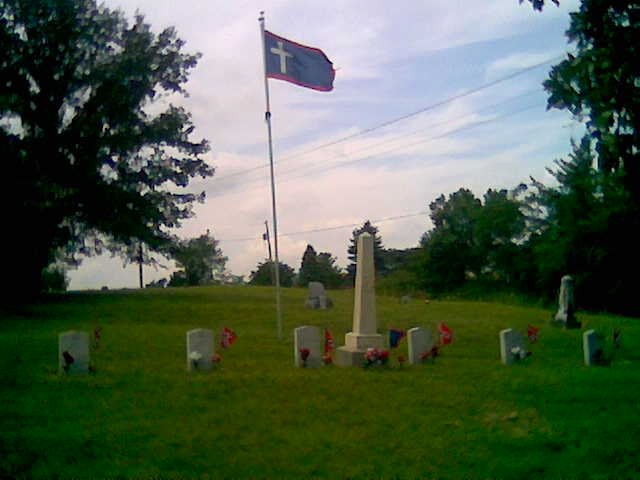-
Posts
52,937 -
Joined
-
Last visited
-
Days Won
629
Content Type
Profiles
Forums
Events
Posts posted by Subdeacon Joe
-
-
-
33 minutes ago, Black Angus McPherson said:
Yeah, that is weird. 1776 has some great music.
Angus
I know. I love it for its music. But I never thought of it as a musical. My wife is as huge fan of musicals, she's the person that got me liking them, and I said to her, "You know what musical we missed? 1776!" She blinked and said, "Yea! That is a musical, isn't?" To us it was just a good movie.
-
 1
1
-
-
1 hour ago, Eyesa Horg said:
Or if he'd been from south, Bobby Frank!
Nope. From the South that would be just Plumb Bob.
-
 2
2
-
-
OMYGAWD!!!! HE'S FLUENT IN SPANISH....JUST LIKE CASTRO AND CHE!!!
-
 4
4
-
-
4 minutes ago, Pat Riot said:
People change their names in the Muslim religion as well.
Mohammedeans copied several things from Christianity.
-
7 minutes ago, Eyesa Horg said:
The last one had a net worth of 16 million, no wonder he didn't take his 32k a month salary. Wow! Had a nice Harley though. Who da thunk!
Most of that wasn't personal wealth, but tied up in official residences and vehicles at his disposal.
Saying that it was his personal wealth is like saying that the President owns the White House, Airforce One, Camp David, Marine One, and the fleet of presidential limousines.
-
 2
2
-
-
2 hours ago, Marshal Mo Hare, SASS #45984 said:
Nobody mentioned anything religious.
Didn't want to start doctrinal or sectarian arguments.
-
 2
2
-
-
17 minutes ago, Rip Snorter said:
Look him up online. It is what it is.
He seems to have a solid background in theology and doctrine. His choice of name indicates a return to a more conservative Roman Catholic Church.
-
18 minutes ago, Eyesa Horg said:
And they made him change his name already.

A thousand years of tradition. Actually, you could say that it dates from the start, as St. Peter had had his name changed by Christ. Then for about 500 years the Bishops of Rome used their own names. Then in the Mercurius changed his name to Joh (Pope John II) because "Mercurius" had too many pagan overtones. Another 500 years when in the 11th century Peter Canepanovna changed his name to John (the XIV? - somewhere around that number) so he wouldn't be "Peter II." I think that is the only rule, no other Pope shall ever take the name of Peter. It's not mandatory that a new Pope take a new name, but it became a custom, and only a few since the 11th century have not taken a new name.
It signifies becoming a new man, in a new era of the Church. There may be some symbolism, maybe an indication of his philosophy on the direction the Church should go. Pope Francis took a name never before used to indicate a new direction for the Church. John Paul I took his name inspired by the work and direction of the two previous Popes, signifying both a loving faith, and a traditional one. Pope Benedict XVI took the name as to signify that humility plays a role in the ministry.
But it's also a very old Christian tradition. Adults who are received into the Church often take new names to signify that they are new people, reborn through baptism. Monastics are given a new name. Some who become deacons or priests will change their name.
-
 1
1
-
 2
2
-
-
To those of you who are Roman Catholic, CONGRATULATIONS! May the new Bishop of Rome lead your Church with wisdom and understanding.
https://relevantradio.com/2025/05/habemus-papam-introducing-our-new-holy-father-pope-leo-xiv/-
 4
4
-
 2
2
-
-
-
https://www.defense.gov/Multimedia/Experience/VE-Day/
On May 8, 1945 - known as Victory in Europe Day or V-E Day - celebrations erupted around the world to mark the end of World War II in Europe.
The war had been raging for almost five years when U.S. and Allied forces landed on the beaches of Normandy, France, on June 6, 1944. The invasion signaled the beginning of the end for Adolf Hitler and Nazi Germany. In less than a year, Germany would surrender and Hitler would be dead.
But in his speech to the nation on V-E Day, President Harry S. Truman cautioned that Allies must "work to finish the war" by defeating the Japanese in the Pacific.
-
 1
1
-
 1
1
-
-
1 hour ago, Rye Miles #13621 said:
my little present to myself to drink really good coffee everyday.
That's why I save it for weekends or an occasional evening treat. Times when I can slowly savor and really enjoy it. Drinking good coffee out of a metal cup with a plastic lid seems a waste.
-
16 hours ago, J-BAR #18287 said:
Watch Ann-Margret in Bye Bye Birdie and tell me you're not in love.
Well, some 4 letter word that starts with L!

-
 1
1
-
 1
1
-
-
2 hours ago, Rye Miles #13621 said:
Okay Beans or ground? I buy beans and grind up enough for a couple days. A pard of mine was in the coffee business and said beans are fresher than ground coffee because it’s been ground months ago and packaged.
I used to do that. But for weekday coffee, or what I put in my travel cup for work, the premium price of it just isn't worth it. If it's on special I might pick some up for "Weekend Coffee" or an evening treat. Otherwise it's either Folgers or Yuban.
-
 1
1
-
-
How many of you had to read this in junior high? Or maybe high school? An excellent little piece, the message of which is usually lost on youth, and ignored by English teachers.
https://americanliterature.com/author/ambrose-bierce/short-story/an-occurrence-at-owl-creek-bridge/-
 1
1
-
 1
1
-
-
8 hours ago, Black Angus McPherson said:
A holiday favorite is "1776".
It's weird...I usually don't think of that as a musical!
-
-
-
-
 1
1
-
-
MAN! That would be great in some desert canyons I've been in!
-
 2
2
-
-
Sometimes they are, sometimes they aren't.
I've read that on a drive, with unfamiliar and changing conditions every day, maybe short on water and feed , they could be edgy.
-
 1
1
-
-
15 minutes ago, Blackwater 53393 said:
Helluva pitcher’s duel again tonight!
A rookie, pinch hitting with a .172 batting average, hits a deep sacrifice fly ball to center field in the tenth inning for the Yanks to grab the series!
Great game, I don’t care who you’re for!!
Fantastic game! Nail biter. In my opinion, being born and raised in San Diego County, I think the wrong team won, but hells bells! Padres blew a 3-1 lead in the 8th.
-
Some good suggestions. I'd have to go with the discovery of antibiotics or vaccines.
Or maybe insecticides.
-
 1
1
-


Smoke cam
in SASS Wire Saloon
Posted